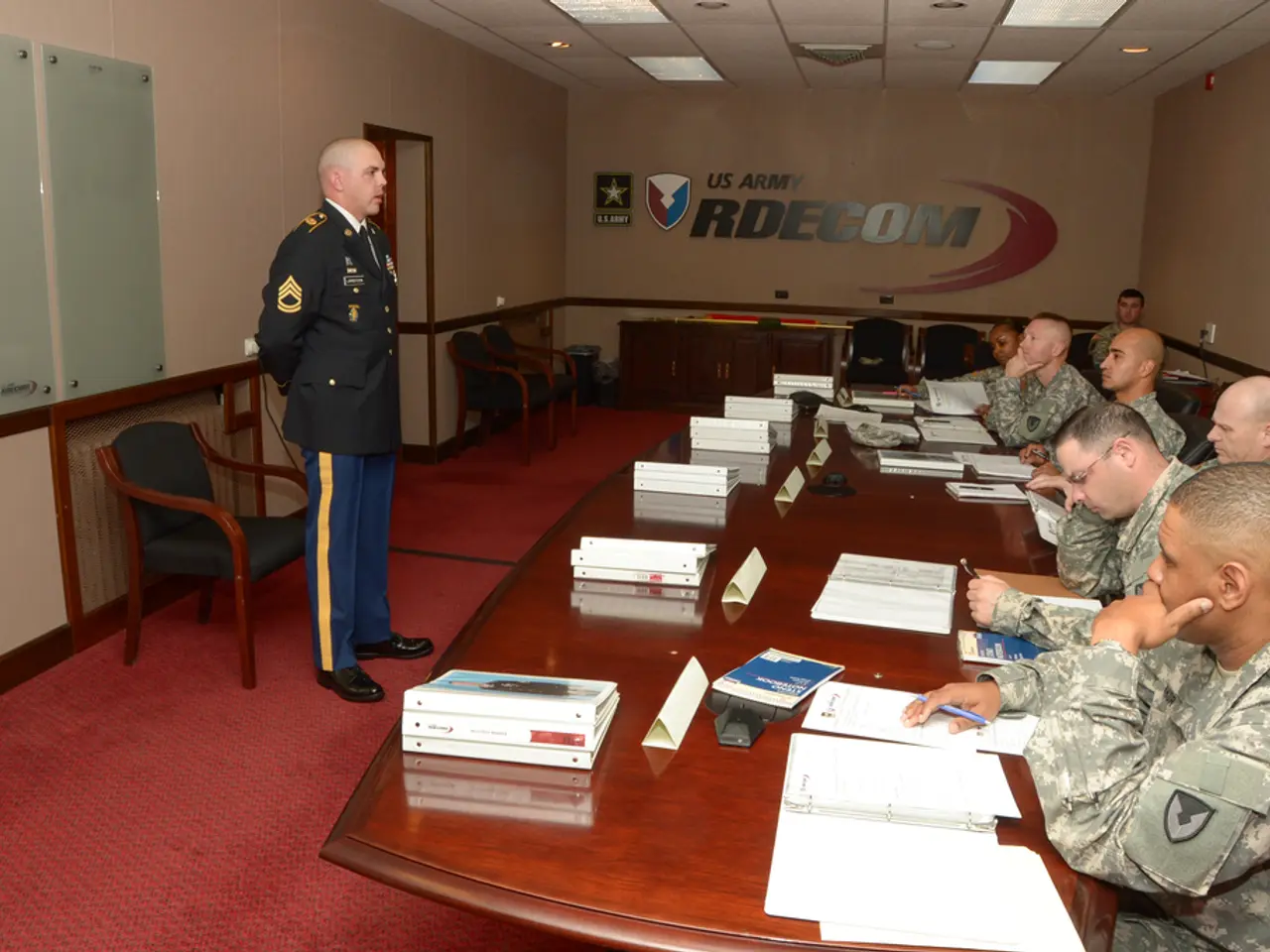Unclogging the clearance backlog: Trim bureaucracy, not functions
Streamlining Clearance Transfers for Improved Efficiency
The Intelligence and National Security Alliance (INSA) is advocating for changes to the clearance transfer processes within national security agencies, aiming to save hundreds of millions of dollars annually and enhance the efficiency of these crucial operations.
Every year, approximately 80,000 clearance transfer transactions take place, often resulting in delays of up to 14 days per person. These delays, totalling nearly half a billion dollars annually, impact both government employees and contractors, leading to lost productivity and untouched mission-critical work.
To address this issue, the federal government can focus on three key areas: clearance reciprocity, digital transformation initiatives, and interagency collaboration.
Firstly, implementing and enforcing clearance reciprocity standards can prevent redundant investigations when individuals transfer jobs or agencies. This approach recognizes prior adjudications and investigations, reducing duplicative investigations and streamlining the process.
Secondly, modernizing the clearance process via digital tools under initiatives like Trusted Workforce 2.0 can accelerate processing timelines. These technologies, such as automated record checks, AI-assisted adjudication, digital fingerprinting, electronic document submission, and real-time status updates, can enhance continuous vetting, improve information sharing, and streamline reciprocity handling across agencies.
Lastly, encouraging collaboration and coordination among agencies can reduce bottlenecks and remove administrative barriers. Standardized procedures and improved Facility Security Officer (FSO) to FSO communication during transfers can facilitate a smoother process across agencies.
Moreover, establishing clear policies for position risk level changes and transfers, as exemplified by the Internal Revenue Service (IRS), can further minimise redundant efforts. This includes timely initiation of investigations when upgrading clearance levels and ensuring up-to-date adjudications during intra-government moves.
The Department of Government Efficiency (DOGE) is well-positioned to help remove bottlenecks and drive shared clearance practices. Existing government efforts are aimed at improving efficiency across agencies for clearance transfers, and collaboration, coordination, and modest process changes could dramatically streamline these transfers.
The delays in clearance transfers are not due to security concerns but rather from outdated and inconsistent administrative requirements across agencies, each with its own forms, systems, and requirements. Removing unnecessary bureaucracy in clearance transfer processes is both responsible and overdue.
Don Blersch, chair of the INSA Security Policy Reform Council, and Lindy Kyzer, vice chair, are leading the charge for these much-needed reforms. The streamlined process combines standardized reciprocity rules, technology-driven automation, and interagency cooperation to improve clearance transfer efficiency for TS/SCI holders government-wide.
Sources:
[1] INSA. (2021). INSA Security Policy Reform Council Recommendations on Clearance Transfer Efficiency. Retrieved from https://www.insaonline.org/wp-content/uploads/2021/06/INSA-Security-Policy-Reform-Council-Clearance-Transfer-Efficiency-Report-June-2021.pdf
[2] Federal News Network. (2021). INSA calls for clearance transfer reforms to save $500M annually. Retrieved from https://federalnewsnetwork.com/civilian-agencies/2021/06/insa-calls-for-clearance-transfer-reforms-to-save-500m-annually/
[3] Nextgov. (2021). Clearance Transfer Delays Costing Government Half a Billion Dollars a Year, Report Says. Retrieved from https://www.nextgov.com/emerging-tech/2021/06/clearance-transfer-delays-costing-government-half-billion-dollars-year-report-says/173018/
[4] Government Matters. (2021). INSA calls for changes to clearance transfer process. Retrieved from https://www.governmentmatters.com/2021/06/insa-calls-for-changes-to-clearance-transfer-process/
- The reimagined federal workforce, in alignment with the focus on efficiency, could benefit from the proposed reforms in the clearance transfer processes, potentially freeing up millions of dollars annually and optimizing the performance of both government employees and contractors in the business sector.
- A comprehensive review of the workforce, with an emphasis on education-and-self-development, might identify opportunities for the adoption of innovative digital tools in finance management and other fields, much like the technology-driven automation proposed in the streamlined clearance transfer process.
- The council's advocacy for changes in the clearance transfer process within national security agencies also underscores the need for sports leagues and casino-and-gambling industries to assess their own workforce practices for areas of potential improvement, with an eye towards enhancing efficiency and ensuring continuous vetting.




